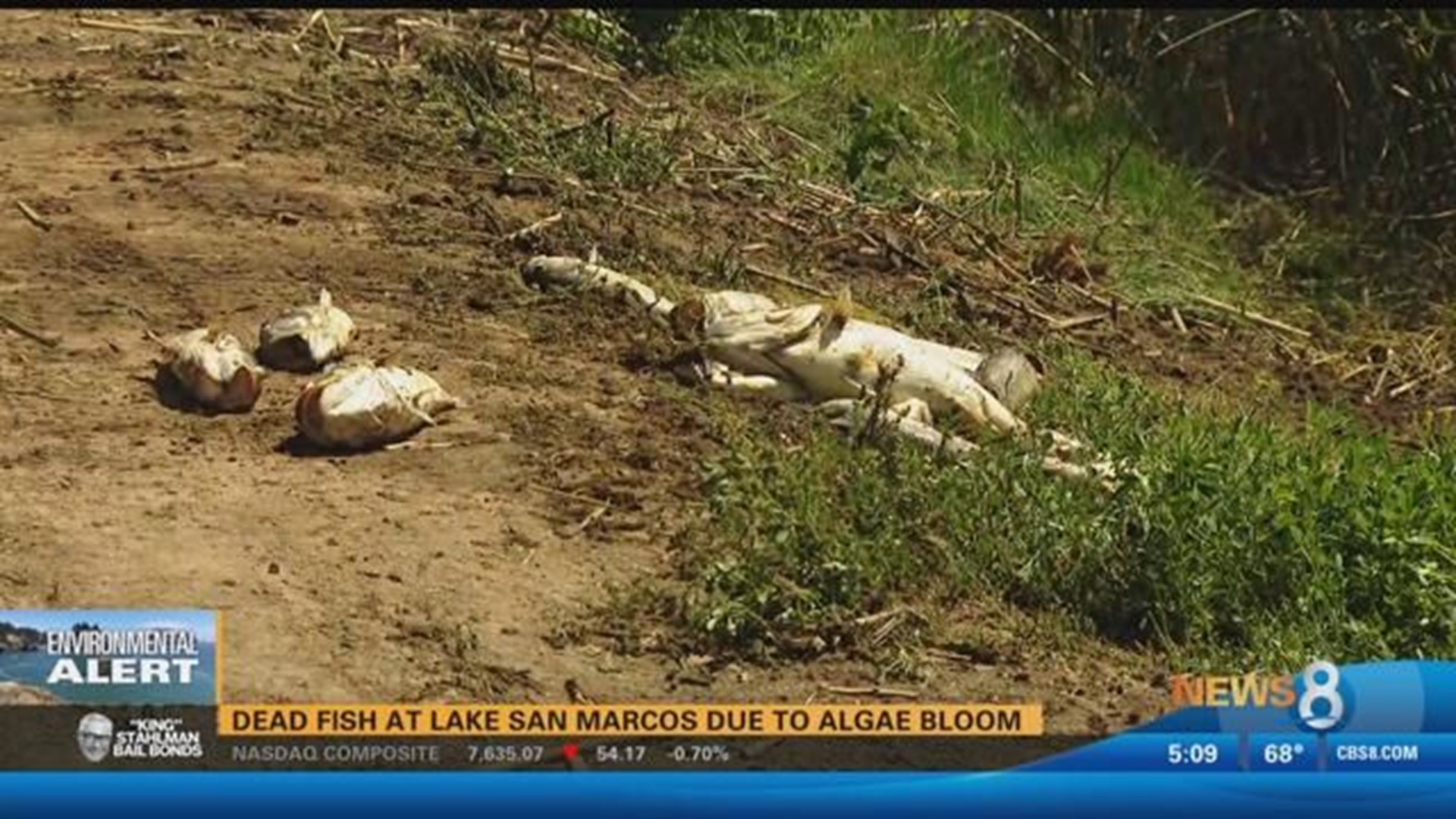SAN MARCOS (NEWS 8) – Dead fish are popping up by the dozens on the banks of Lake San Marcos, but it is not the first time the lake has dealt with this problem.
Shocked to see so many dead fish at Lake San Marcos, resident and fisherman Tim Clemons took multiple pictures. “We’re not quite sure if they waited too long and we had a massive algae bloom that caused the die off of the fish whether it was something they treated the lake with.”
The owners of the lake placed alum in the water, but in the meantime fish like big bass continued to wash up. “The fish are dying for lack of oxygen for some reason and now we have the situation that we have,” said Clemons.
Carter Coleman, 16-years-old, first noticed the issue the first week of May. “Usually if an algae bloom is going to kill fish, it has to be really, really bad. It was not bad this time. I don’t know what is going on,” he said.
A noticed posted at Lake San Marcos read: “We understand your concern regarding the lake and are working within our means to remove the dead fish. Three crews are assisting with the removal volunteers are welcomed!”
Longtime lake resident Laura Sharp said these dead fish waves come and go every year.
A similar situation happened in 2014, with dead fish at Mission Trails Park.
“We don’t want to lay blame on somebody. We just want answers,” said Clemons.
A senior ecologist for the Lake San Marcos Marina told News 8 he was not authorized to provide a statement.
Citizens Development Corporation (CDC) provided News 8 with the following statement:
Citizens Development Corporation (CDC) is aware of the current conditions at Lake San Marcos, and shares a heightened level of concern regarding the recent fish kill. Maintaining a health lake is extremely important to CDC and the community. We are currently working with stakeholders, residents of the surrounding community, and State regulators to arrive at both short and long-term solutions to many issues, including nutrients, excess algae, and fish kills. Fish kills at the lake have not been observed for more than a decade, and this is an extreme event. However, based on available information, there is no reason to believe that any recent action of CDC or any other entity is responsible for the current fish kill. Rather, it is additional symptom which emphasizes the need to address nutrient issues.
CDC is now participating in a program with other stakeholders and under the regulatory oversight of the Regional Water Quality Control Board to address water quality at the Lake. The Lake is currently being treated to decrease excessive algae and nutrients. These treatments are being undertaken over many days in part to ensure that lake health is maintained during and after the treatments. The scientists working on the Lake have been tracking the lake conditions and are aware of the recent fish kill issue. We will continue to monitor the lake during the treatment process to ensure that key water quality parameters and lake health are maintained.
We welcome further engagement by all stakeholders and members of the public. CDC will be participating in a Public Workshop to discuss recent and upcoming activities related to pilot testing and cleanup work.
Location: Fairway Room at St. Mark Golf Course Clubhouse, 1750 San Pablo Drive, San Marcos, CA 92078
Date and Time: Wednesday, June 13, 2018, 9:30 a.m.-11 a.m.
The workshop will include the following:
· Information on current lake conditions including the fish kill and increased algal growth;
· Updated outline/schedule of the path forward for site cleanup;
· Description of upcoming field activities and document submittals;
· Results of recently performed pilot testing activities, including the alum treatments; and
· Question-and-answer period.Additional information regarding ongoing activities at the lake is available through the State Water Resources Control Board's GeoTracker website.

